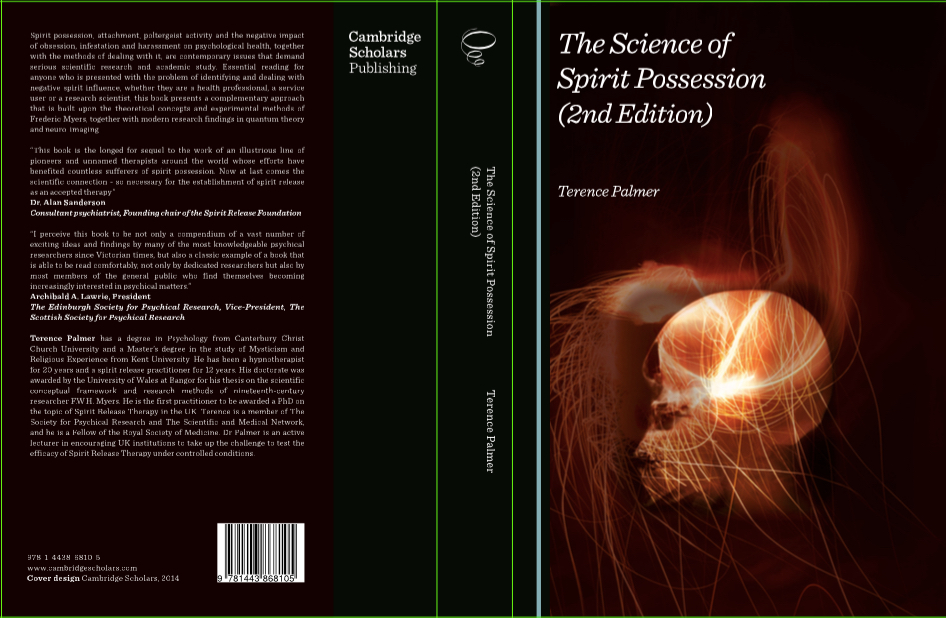Case-Study Database Quantification
It is in psychiatric and clinical psychology case histories where the subjective experience of clients (patients) suffering from all the maladies of the mind and emotions may be found and analysed. Edward Kelly suggests how case histories can be used for scientific research:
‘Cases initially studied and reported individually can be encoded according to appropriate descriptive schemes and entered into cumulative databases which, when they become sufficiently large, afford important new opportunities for quantitative study of internal patterns, predictive relationships, and so on, governing the relevant domains’ (Kelly, 2007b, p. 583).
It may be anticipated that a database of case studies, that includes the coded experience of “trance possession” would include cases where possession is reported according to a belief in possession, but a successful remedy reveals that the belief was false. Conversely, data could reveal instances where there was no belief in possession at all and yet a successful intervention reveals a case of genuine spirit possession. It is these cases that would provide the most valuable information on the experience rather than the belief if such cases could be reported. This proposition requires a more open-minded approach, and would demand that observers and therapists suspend their own disbelief, and simply allow the patient to explore, discover and report exactly what it is that they are experiencing.
Psychiatrist Shakuntala Modi (2000) sets the standard by offering her analysis of patients who had presented a wide variety of emotional, mental, behavioural and physical problems. Analysis of 100 patients revealed results that were surprising. 92 of the 100 were found to have earthbound spirits attached to them, 80 patients had more than one, 50 patients had spirits of relatives and 77 patients had spirits that were described by Modi as “demonic” (ibid, p. 7). Modi’s analysis also revealed that 80% of primary (acute) symptoms such as depression, anxiety, panic attacks and psychotic symptoms, and 30% of secondary (chronic) symptoms such as arthritis, sinusitis, back pain and headaches are caused by spirits, while 20% of primary symptoms and 70% of secondary symptoms were caused by past-life traumas (ibid, p.7).
Modi reveals that contrary to her training as a medical psychiatrist and her non-belief in a spirit world, the experiences of her patients and her own experiences that were led by her patients, enabled her to accept the plausibility of an alternate reality and the ontology of spirit entities. I cite Modi’s findings in order to illustrate the point that accurate case records can be used to provide useful descriptive statistics, and whether the patient or the therapist has a belief in an afterlife or not, the data can be left to speak for itself.
Group A clinical intervention research protocol
Video and audio recording of consultations are recommended as a routine procedure, both as a source of scientific data and for the protection and welfare of the client and the therapist should any claim be made by either side for inappropriate behaviour or the contravention of professional and ethical standards. Clients need to be made aware of this routine procedure and asked to sign a consent form as an essential formality prior to any intervention.
Each case file record should contain a connection between confidential personal information and a link with the anonymous case file for peer scrutiny, epidemiological studies, etc. Data for statistical analysis needs to include basic demographic data and the origin of the consultation.
A case file should comprise of four essential sections:
Part A gives demographic data, the source of the referral, a clinical diagnosis (if any) and a brief description of the problem in the client’s own terminology. The data gathered from this form is the case ‘base-line data’.
Part A Remote SRT Referral Request [Form id=”16″]
Part B If psychiatric assessment protocols or psychometric instruments are to be used for the collection of base-line data on the mental, emotional, physical and behavioural condition and subjective experience of the patient/client, then part B is where such information is to be maintained for repeated measures analysis. In addition, patients should ideally be interviewed with audio/visual recording to facilitate transcription for case file reports and qualitative analysis.
Notes transcribed from audio-visual recording devices are to be attached as appendices.
Part C is a report on the type, details and activity of the ‘intervention’ that was actually used in a successful resolution to the presenting problem.
Appropriate interventions could include any of the following:
- Medical/psychiatric interventions are likely to be pharmacological.
- Psychological conditions may be treated with psycho-dynamics such as Freudian or Jungian, cognitive behaviour therapy (CBT), rational emotive therapy (RET), Mindfulness, Hypnotherapy, etc.
- A religious exorcism or readings from scripture could be a remedy for a genuine demonic possession.
- Anglican deliverance ministry
- Pentecostal deliverance ministry
- Shamanic soul retrieval.
- Spiritual healing methods include Spirit Release Therapy (SRT) espoused by William Baldwin, Irene Hickman, Shakantala Modi and Edith Fiore.
- Spiritism according to Allan Kardec
- Spirit Response Therapy, using the pendulum, by Robert Detzler.
- Spiritualism laying on of hands and remote prayer (distance healing).
Note: Any method that works would be given an operational variable and codified for entry into the database.
The attached pdf file below gives descriptions of the five different types of intervention method used by SRT practitioners.
The intervention should be recorded, preferably by audio-video, or by audio at the very least, and a transcription of the recording attached as an appendix.
A classification for the SRT intervention type could be allocated as follows:
1. Intuitive therapist
2. Interactive
3. Direct interactive
4. Remote
5. Group
State if video / audio recordings attached Y/N
Part C SRT methods of intervention
Part D is a record of the findings, the therapeutic ‘outcome’, follow-ups and any ongoing therapy. If psychometric instruments, audio or visual recordings are used in repeated measures for ‘before and after’ comparisons then these are to be attached as appendices.
Findings can be categorised by aetiology typology which may include the type of spirit entity encountered, when it first attached to the client, what its objective was and under what circumstances it first attached to the client.
Type of entity may include, and not be exclusive to one type only: earthbound, DFE, elemental, alien, autogenic (self-created) thought-form, curse, unresolved past-life issue. A full catalogue of spirit types and their possible origins may be found in Sue Allen’s Spirit Release: A practical handbook (Allen, 2007).
Part D remedy and outcome proforma
Group B Clinical Trials Under Controlled Conditions
1. Domestic Violence and Sex Crimes. Offender Rehabilitation with SRT.
2. Hearing Voices in Schizophrenia: Hallucinations or Spirit Possession?
3. The Efficacy of Remote Methods in the Treatment of Diseases of the Nervous System
4. Telepathic Diagnosis
5. The Ross Project
Initiated by three independent families with a family member diagnosed with psychosis, this project seeks to find a protocol of ‘Best Practice’ in the treatment of psychosis.
6. Hospital Earthbound Validation
Earthbound spirits of the deceased who are found to be wandering around hospitals where they left their bodies may be questioned and asked for their name, cause of death and date of demise before they are released to the light by spirit release practitioners. Evidence of the validity of their earthly existence may be verified by simply accessing their death certificates.
Contact us
If you have an interest in any of the above proposals please use this contact form to express your interest. Thank you.
[sform id=’2349′]



